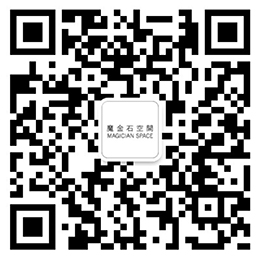Frieze | ‘The Endless Garment’ unpicks the fashion industry
This post is also available in:
 English
English
‘The Endless Garment’ at Bejing’s X Museum is the second of two exhibitions curated by Jeppe Ugelvig and Poppy Dongxue Wu to explore garment production in Asia. Containing 26 works by artists and designers based in Asia or from the Asian diaspora, the show questions ideas about identity, belonging, community and global interconnectedness in the fashion industry. And more subtly, perhaps, it touches on the considerable and controversial impact of the clothes business on the environment.
Evelyn Taocheng Wang considers the idea of ‘elegance’, a concept whose definition is both personal and cultural. Her Spreading Elegance (2019) is an installation that contains letters written by the artist’s friends – given in exchange for a piece of clothing by designer Agnès B – which explain their individual understanding of elegance (Agnès B was, until recently, considered by many Asians to be the epitomy of European chic). In het kleine verhaal – 1ste_3de (2019), traditional Xuan rice paper sheets (decorated with ink drawings, Chinese calligraphy and Mylar) hang from two Agnès B garments, transforming the clothing into a piece of art and thus achieving an aesthetic that embraces both East and West.
The plight of older migrant workers in China is brought to the fore by Hu Yinping’s contribution to the show. Once they return home to the places they left to find work in the cities, these people are faced with the prospect of no further employment. The artist invited out-of-work migrant workers in her hometown in Sichuan to produce hats and bikinis. Over the years, this has led to the development of a community of knitters, each of whom have used the work to help them find a new sense of purpose. In Xiao Fang (2021), a work commissioned for this show, Hu asked the women to decorate working people’s uniforms with words or phrases they associate with their jobs (for example, on the uniform of a delivery person, we repeatedly find the word kuai ‘fast’). Hu’s work crosses divides and helps connect the older generation with the younger, the unemployed with the employed, the rural with the urban.
Checkered-plastic laundry bags are strongly associated with migrant workers in China, as well as with immigrants and refugees in many other parts of the world. Traveller’s Checks (2021) by the German-Vietnamese artist Sung Tieu highlights the irony of these humble, utilitarian bags being rebranded by several fashion brands as desirable items for the global jet-setter. The collective Shanzhai Lyric (a ‘poetic research and archival unit’) reverses this proposition in its latest video CNANEL (2021), which explores how inexpensive counterfeit products copy international luxury brands, resulting in fashion trends that become both global and mass market.
The installation He Wanted to Talk About Love. The Blue that Pulsates Through All Living Things (2021) results from a collaboration between fashion designer Philip Huang, artist Korakrit Arunanondchai and ECCO Leather. It features a new version of Arunanondchai’s serial video work Painting with History in a Room Filled with People with Funny Names 3 (2021), which is presented inside a womb-like space formed of handwoven textiles and indigodyed leather hidesthat have been digitally printed with stills from the video. The artists’ collective goal here was to produce natural, indigo-dyed leather without synthetics.
‘The Endless Garment’ underscores the interconnectedness and interdependence of the global fashion business. Ugelvig and Wu highlight the thematic strands that can help describe this complicated industry, such as globalization, commercialization and exploitation. Works in the exhibition engage with the labour conditions and inequalities that are implicit to the production chain.
